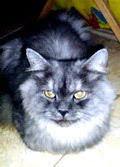Palembang is the capital city of South Sumatra Province of Indonesia. It was formerly known as the capital city of the ancient Kingdom of Srivijaya . Located on the Musi River banks on the east coast of southern Sumatra Island, it has an area of 400,61 square kilometres and a population of 1.441.500. Palembang is the second-largest city in Sumatra Island after Medan and the fifth-largest city in Indonesia.
Major landmark of Palembang are the AMPERA bridge and Musi River that divided this city into two parts, the north (Seberang Ilir) and the south part (Seberang Ulu). The Seberang Ilir became the economy and cultural center and the Seberang Ulu became the political center of this city.
Sultan Mahmud Badaruddin II International Airport serves Palembang and other cities around South Sumatra Province. The Boom Baru Harbor is the main harbor of Palembang, it is located on the north coast of Musi River and also connected Palembang with Bangka Belitung Islands Province.
History
The city was once the capital of the ancient, Buddhist Kingdom of Srivijaya that controlled a large part of what is now Malaysia and Indonesia. Following a 1025 raid by the Chola Empire (In the period of Emperor Rajendra Chola I) of southern India it began to gradually decline in importance. Srivijaya's capital eventually moved northward to Jambi. Palembang is also the origin of Parameswara, founder of the Malacca Sultanate.
The architectural legacy of Dutch colonization is still visible in the city. Deep-water port facilities are built along the Musi River, which flows through the city.
The naval Battle of Palembang was fought near the city during the Second World War between February 13-February 15, 1942.
Citizen
The Palembangnese is one of Malay family, they speak Malay as their language but with their own dialect and they called it Bahasa Palembang. Other people that are not native to Palembang but still came from South Sumatra usually blended their language with Bahasa Palembang, such as Bahasa Komering, Lahat, Rawas, etc. There are also the people that came from outer South Sumatera. Most of them are Javanese, Chinese, Arabian, Indian, and Sundanese.
The major religion in Palembang is Muslim. But they are also Christianity, Buddhism, Hinduism, and Konghucu.
Bidar boat (The Sriwijaya Festival)
Tanggai Dance
Interesting Places
1. Musi River
2. AMPERA Bridge
3. Sultan Mahmud Badaruddin II Grand Mosque
4. Kuto Besak Fortress
5. Major Office Building
6. Kambang Iwak Family Park
7. Punti Kayu Forest
8. Museum of the ancient Kingdom of Srivijaya
9. Siguntang Hill
10. MONPERA (People Struggle Monument)
11. Balaputradewa Museum
12. Sultan Mahmud Badaruddin II Museum
13. Kawah Tengkurep Cemetery
14. Cheng-Ho Sriwijaya Mosque
15. Kapitan Town
16. Arabian Town
17. Fantasy Island
18. Bagus Kuning
19. Songket crafts center
20. Kemaro Island
21. Pertamina refinery
22. PUSRI fertilizer factory
23. Sungai Gerong
Arts and Cultures
These are some of the famous arts in Palembang:
>Dul Muluk (the Palembang's traditional performing arts (drama))
>Many of traditional dances such as Gending Sriwijaya Dance to welcome guests and Tanggai Dance that usually performed in wedding reception
>Many of traditional songs such as Dek Sangke, Cuk Mak Ilang, Dirut, and Ribang Kemambang
The traditional house of Palembang is Limas House and Rakit House. You may visit the Limas House for 10,000 Rupiah. (About $1 US).
There are many festivals that are always held every year in Palembang such as: the Srivijaya Ferstival on June to celebrate Palembang's anniversary, the Boat festival on August to celebrate Republic of Indonesia's anniversary, and other festivals to celebrate the Ramadhan, New Year, Chinese New Year, etc.
Pempek
Traditional Foods
Palembang also known as the Pempek City. It is because there is a traditional snack that was made from a fish and sago called pempek or empek - empek. This delicacy has many variation in shape and taste, but all of them are absolutely delicious. Other traditional food from Palembang are tekwan, model, laksan, celimpungan, mie Celor, burgo, pindang patin, pindang tulang, malbi, tempoyak, otak - otak, kemplang, kerupuk, maksubah cake, delapan jam cake, srikayo cake, etc.





















.png)





















































